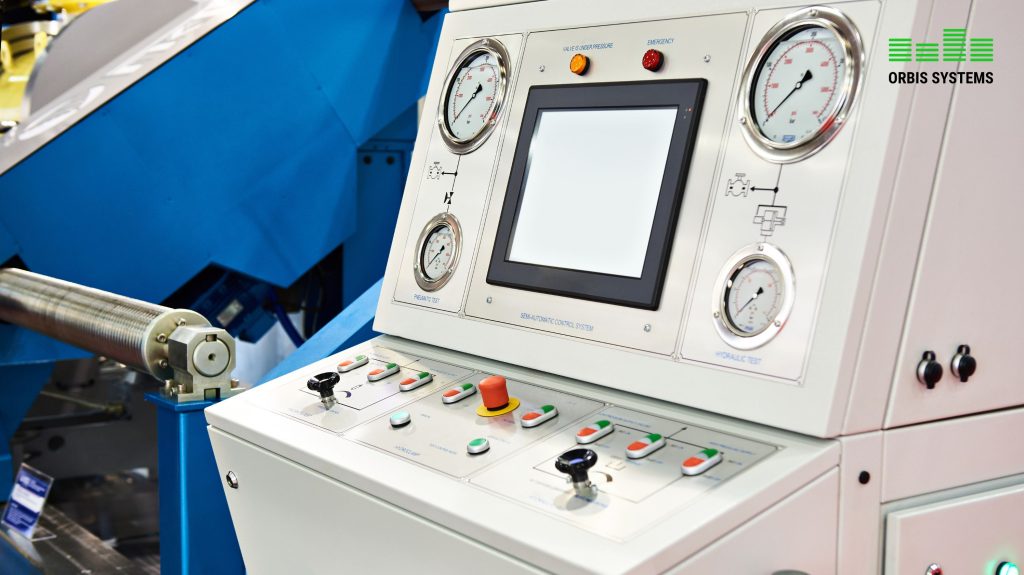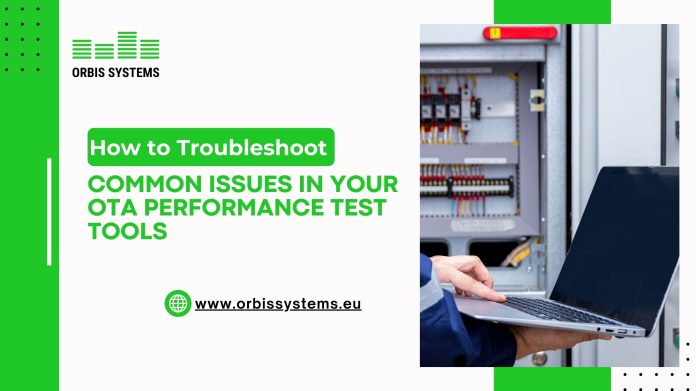The continuous growth in wireless communication makes it very vital to maximize the performance of Over-the-Air (OTA) systems. Being in the development side or testing of new and existing devices, there is always that moment where you are stuck on trying to troubleshoot common problems in your OTA performance test system. This blog will explain some of the best practices to deal with such scenarios in order to achieve accurate OTA testing results.
Understanding OTA Performance Testing
OTA performance testing has the role of measuring how devices within wireless networks perform their communication. OTA testing is a functional testing technique as opposed to many other testing approaches and draws conclusions on signal fineness, coverage, and device performance based on an actual environment. This testing is very crucial in as far as it helps in confirming whether actual devices conform to particular industry standards and whether devices to deliver correct user experience.
Before you can start identifying problems in the OTA performance test system, it is necessary to have an understanding of the make up of both terms involved. Key elements include:
- Antenna and OTA Testing Equipment: These are equipments used with specific aim of evaluating the effectiveness of the antennas and devices in the actual operation.
- OTA Signal Quality Testing: Here the quality and intensity of the incoming signal to the device is judged, this is very important so as to guarantee a reliable signal connection.
- Performance Testing for OTA Systems: This includes some tests to see how a device works when there is interference and when signal strength varies.
- Over-the-Air Testing Solutions: These solutions afford the necessary framework and technology to perform detailed OTA tests effectively.
- Wireless Communication Performance Testing: This includes evaluating the performance parameters of the wireless equipments; delay, data rate and error.
Knowing these components will assist in determining which area in your OTA performance test system may provide cause for concern.

Common Issues in OTA Performance Testing
1. Inconsistent Signal Strength:
Among all these problems, one of the most frequently reported in the context of OTA performance testing is signal strength instability. This practice can generate inconclusive test outcomes, thus, are not suitable for accurately measuring device performance.
Troubleshooting Steps:
- Check Antenna Placement: Make sure that all the antennas are well aligned before proceeding how to ensure correct alignment of the antennas? Signal degrading can result from wrong positioning of parts of the circuit.
- Inspect Cables and Connectors: Signal loss is caused by low quality or faulty cables. Annual or any time they are damaged, replace cables and connectors that are not in good working condition.
- Evaluate Environmental Factors: There is always an impact in signal reception by the device from other neighboring walls, furniture, or electrical appliances. These effects perhaps can be reduced through conducting the tests under controlled environments.
2. Poor Signal Quality
One of the absolute critical concerns when analyzing OTA performance, is the signal quality. Weak signals can cause connection breaks, and in general, slow down the connection speeds.
Troubleshooting Steps:
- Use Quality Testing Equipment: It must also be important to check your antenna and OTA measuring equipment that you are going to use to ensure that they are in good working condition and that they have been calibrated properly. Thus, more emphasis should be placed on the production of quality equipment so that it can enhance the level of accuracy while conducting tests.
- Analyze the Testing Environment: Carry out assessment of the testing environment in order to identify interference points like other Wireless devices in the same frequency domain.
- Adjust the Testing Configuration: It might be useful to note that a fine tuning of the OTA signal quality test apparatus is sometimes beneficial. It can be changed and tried in each and every configuration possible in order to find out the right one.
3. Device Compatibility Issues
The compatibility of devices with the testing system can cause unforseen outcomes. The flaws of devices may be revealed if those devices are not compatible with testing equipment to the fullest extent possible.
Troubleshooting Steps:
- Update Firmware and Software: Check that all the presents devices and testing equipments are in the current firmware/Software version. This can solve many of the compatibility problems.
- Check Device Specifications: Check the experience level of the devices being tested in the course of OTA performance test to meet the system requirements.
- Conduct Preliminary Tests: This is the case because one should first check new devices for signs of compatibility trouble before running through a full check.
4. Inaccurate Test Results
That is why, indicatively low or high results can be explained by various reasons – technical malfunction of devices, improper performance of tests.
Troubleshooting Steps:
- Recalibrate Testing Equipment: Regular calibration of your OTA testing solutions is essential to maintain accuracy. Follow the manufacturer’s guidelines for calibration procedures.
- Review Testing Procedures: Ensure that your performance testing for OTA systems follows standardized protocols. Inconsistencies in procedures can lead to unreliable results.
- Document Test Conditions: Keep detailed records of test conditions, including temperature, humidity, and other environmental factors that can influence results.
5. High Latency and Low Throughput
Latency and throughput are some of the performance indicators that are used often when testing wireless communication services. Thus it is evident that high latency or low throughput can in fact mean serious problems with device or network.

Troubleshooting Steps:
- Network Configuration Review: When your network settings are set rightly, they should help in enhancing the performance of the connection. This it entails the monitoring of bandwidth usage and network traffic.
- Conduct Stress Tests: Stress test the system, this way you can tell how well it will perform when it receives a high traffic. This can help in making certain that an operation is not being slowed down by constraints to the flow of workflow.
- Analyze Data Traffic: The last is about using monitoring tools for traffic data with a view of going for features that have additional traffic with view of ascertaining whether their performance is impaired in any way.
Best Practices for Effective Troubleshooting
To enhance your troubleshooting efforts, consider the following best practices:
1. Create an organizational Trouble Shooting Checklist: The creation of checklist can make the best sense when in process of identifying those problems that require thoughts and efforts to solve. Categorise these into main categories, subcategories and include general problems, signs of these problems and general probable causes as a way of increasing orderliness.
2. Implement Regular Maintenance: You ought to carry out some preventive measures on your OTA performance test system for it to perform optimally. Biannual checkups and calibration to avoid hitches to occur in the first place.
3. Train Your Team: Make certain that your team possesses the essential knowledge of the testing equipment available in OTAs and specifics of performance testing for OTA systems. Periodical training also assist in reminding all the people in the company about the best practice and the latest technologies in the markets.
4. Utilize Advanced Testing Solutions: Invest in advanced over-the-air testing solutions that offer enhanced capabilities for troubleshooting and analysis. These tools can provide deeper insights into performance metrics and help identify issues more quickly.
5. Collaborate with Experts: Don’t hesitate to seek help from experts in the field. Collaborating with experienced professionals can provide valuable insights and solutions to complex issues.
Conclusion
Debugging tips concerning typical errors in your OTA performance test system are presented in this paper to guarantee the correct and reliable assessment of performance tests. Learning about common issues and using methods to address them enables a significant improvement in the OTA testing process. It is necessary to keep the necessary equipment in good order, be acquainted with the modern tendencies in the sphere, and use servomechanisms to make the testing process more efficient.
In wireless communication industry, OTA performance testing is not only a need but it is the promise of quality and reliability of products in the market. Utilize these kinds of approaches to increase your testing operations also to guarantee your devices work optimally.








